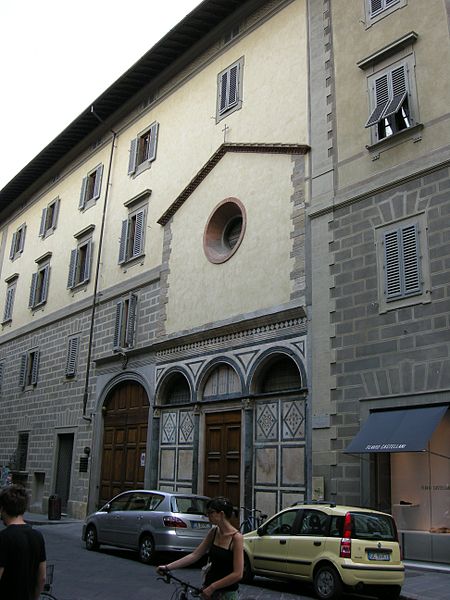San Salvatore al Vescovo
11th-century Roman Catholic church buildings in ItalyItalian church stubsRoman Catholic churches in Florence

San Salvatore al Vescovo is a church located in Florence, Italy. It was first built in the 11th century and has had several subsequent modifications. The lower portion of the facade is built in a Romanesque architecture style with bi-colored marble decorations.
Excerpt from the Wikipedia article San Salvatore al Vescovo (License: CC BY-SA 3.0, Authors, Images).San Salvatore al Vescovo
Piazza dell'Olio, Florence Quartiere 1
Geographical coordinates (GPS) Address Nearby Places Show on map
Geographical coordinates (GPS)
| Latitude | Longitude |
|---|---|
| N 43.773047222222 ° | E 11.254158333333 ° |
Address
Palazzo Arcivescovile
Piazza dell'Olio
50123 Florence, Quartiere 1
Tuscany, Italy
Open on Google Maps










